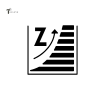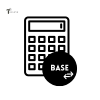Character & Word Counter
Count characters, words, sentences, and more in your text
RELATED TOOLS The Ultimate Guide to Using a Character and Word Counter for Flawless Writing
In the digital age, where every character, word, and sentence carries weight, the ability to communicate clearly and concisely is a superpower. Whether you’re crafting a novel, a legal brief, a social media post, or a university essay, adhering to specific limits is not just a suggestion—it’s often a requirement. This is where the indispensable tool, a character and word counter, comes into play. It’s more than just a simple tally; it’s your partner in achieving precision, clarity, and impact in all your written communication.
Understanding the precise count of words and characters in your text is the first step toward professional and effective writing. This guide will delve deep into the importance of these metrics, explore the various applications of a counter tool, and demonstrate how using a dedicated tool can transform your writing process, ensuring you never miss a limit or compromise on quality.
Why Exactly Do You Need to Count Words and Characters?
You might wonder why such a simple metric holds so much importance. The reasons are vast and touch nearly every aspect of written communication, both online and offline.
Adherence to Strict Guidelines: This is the most common reason. Many platforms and institutions enforce strict limits. Twitter (X) famously limits posts to 280 characters. Academic essays often have firm word count ranges—too few words can mean you haven’t developed your argument, while too many can result in penalties. Professional submissions like grant proposals, conference abstracts, and article pitches have non-negotiable limits. A reliable character and word counter ensures you meet these criteria precisely.
Enhancing Readability and Engagement: Readers in the digital world have short attention spans. Dense, lengthy paragraphs without clear breaks are likely to be skipped. By monitoring your word count, you can consciously work to make your content more digestible. It encourages you to break down complex ideas, use shorter sentences, and create scannable content with headings and bullet points, which dramatically improves the user experience.
SEO (Search Engine Optimization) Benefits: Search engines like Google favor content that provides clear, comprehensive value. While there’s no perfect word count for SEO, longer, in-depth content often ranks better because it covers a topic thoroughly. Using a counter helps you benchmark your content against top-performing pages. Furthermore, meta descriptions (the short blurbs under search results) have an optimal length of around 155-160 characters. Exceeding this will get your description cut off with an ellipsis (…). A precise character count is crucial for crafting the perfect, click-worthy meta description.
Improving Clarity and Conciseness: “Brevity is the soul of wit,” as Shakespeare wrote. A constant awareness of your word and character count naturally pushes you to eliminate fluff, redundant phrases, and unnecessary jargon. It forces you to find stronger verbs and more efficient ways to express your ideas, making your writing sharper and more powerful.
Content Strategy and Consistency: For content creators and marketers, consistency is key. Whether you’re aiming for 500-word blog posts or 1,000-word newsletters, a counter helps maintain a uniform standard across all your content, building trust and expectation with your audience.
OUR TOP RELATED Beyond the Basics: What a Modern Character and Word Counter Can Do
A simple text editor might give you a basic word count, but a dedicated online tool like the one available at Toolifyr offers a much deeper level of analysis. It’s designed to be a comprehensive writing assistant.
Real-Time Analysis: The best tools update their counts instantly with every keystroke. This allows for a dynamic writing experience where you can see the impact of your edits immediately, without having to stop and manually check.
Detailed Text Statistics: A powerful tool doesn’t stop at words and characters. It provides a holistic view of your text’s structure, including:
Sentence Count: Helps you vary your sentence length for better rhythm and flow.
Paragraph Count: Essential for structuring your writing logically and avoiding intimidating walls of text.
Line Count: Useful for poets, scriptwriters, and anyone working with specific formatting.
Reading Time Estimation: A fantastic feature for bloggers and content creators. It estimates how long it will take an average reader to get through your content, allowing you to tailor it to your audience’s preferences.
A Clean and Focused Writing Environment: Online tools provide a minimalist, distraction-free space to compose your text. Unlike a full-featured word processor with countless menus and options, a counter tool interface is designed for one thing: writing and measuring. This can significantly boost productivity.
Ease of Use and Accessibility: There’s no software to download or install. A web-based character and word counter is accessible from any device with an internet connection—your laptop, phone, or tablet. This makes it incredibly convenient for quick checks on the go.
Mastering Limits: Key Applications for Everyone
The utility of a character and word counter spans countless fields and professions. Let’s explore some of the most critical applications.
For Students and Academics:
Essays and Assignments: Meeting minimum and maximum word count requirements is fundamental. Going over the limit can be as detrimental as not meeting it.
Theses and Dissertations: These massive projects often have strict chapter-by-chapter or overall word limits that must be meticulously followed.
Abstracts and Proposals: Whether for a research conference or a grant application, these almost always have brutally short limits (e.g., 250 words). Every single word must count.
For Professionals and Businesses:
Marketing and Advertising: Crafting the perfect ad copy for Google Ads or social media requires extreme precision. Character limits are strict on platforms like LinkedIn, Facebook, and Instagram.
SEO and Content Marketing: Writing title tags (under 60 characters) and meta descriptions (under 160 characters) is a fundamental SEO task that demands exact character count.
Legal and Technical Writing: Contracts, specifications, and reports often need to be precise and unambiguous. Using a counter helps ensure nothing is unnecessarily verbose.
Communications: Press releases and product descriptions often need to fit specific formats or editorial guidelines.
For Creatives and Social Media Users:
Authors and Writers: While novels don’t have hard limits, different genres have general expected word count ranges. Keeping track helps during the editing process.
Scriptwriters: Screenplays and stage plays have very specific formatting rules where page and line count are directly tied to runtime.
Social Media Managers: This is perhaps the most common use case. Crafting engaging posts within the confines of Twitter (280 characters), Instagram captions (2,200 characters), YouTube descriptions (5,000 characters), and TikTok captions (150 characters) is a daily challenge. A counter is absolutely essential.
How to Use the Toolifyr Character and Word Counter for Maximum Effect
Using a sophisticated tool like the Toolifyr character and word counter is incredibly straightforward, but a few pro tips can enhance your experience.
Paste or Type Directly: Simply navigate to the tool page. You can either start typing your text directly into the large, clean text box or paste content you’ve written elsewhere (e.g., from a Word document or Google Doc).
Watch the Magic Happen in Real-Time: As you type or paste, the statistics panel below will instantly update. You don’t need to click a “calculate” or “update” button. The count of words and characters, along with sentences, paragraphs, and more, will display immediately.
Analyze the Full Breakdown: Don’t just look at the word count. Pay attention to the other metrics. Is your sentence count very high for the word count? This might mean your sentences are too short and choppy. Is it very low? Your sentences might be run-ons that need to be split up for readability. Use the paragraph count to see if your text is well-structured.
Edit and Refine: This is the most important step. Use the live feedback to edit your work. See that you’re at 165 characters for your meta description? Start trimming it down. See that your essay is 50 words over the limit? Look for redundant adverbs, weaker phrases that can be replaced with stronger single words, and any tangents that can be cut. The tool gives you the data; you provide the editorial skill.
Use the Clear Button: Made a mistake or finished with one text? The handy “Clear” button instantly resets the text box and all counters, allowing you to start fresh with a new document immediately.
Advanced Tips for Trimming Your Word and Character Count
When you’re over the limit, every character matters. Here are some advanced strategies for cutting down your text without sacrificing meaning:
Target “Very,” “Really,” “Quite,” and Other Weakeners: These adverbs often add little to no value and can almost always be deleted.
Use Stronger Verbs: Instead of “walked slowly,” use “ambled” or “trudged.” A single powerful verb can replace a weaker verb-adverb combination, saving characters.
Eliminate Redundant Phrases: Phrases like “in order to” (just use “to”), “due to the fact that” (use “because”), and “at this point in time” (use “now”) are incredibly wasteful.
Use Apostrophes for Contractions: In less formal writing, use contractions like “don’t” instead of “do not” or “it’s” instead of “it is.” This is a quick way to shave off characters.
Cut the “Thats”: Often, the word “that” can be removed without changing the sentence’s meaning. Read the sentence without it; if it still makes sense, cut it.
Conclusion: Precision as Your Writing Advantage
In a world saturated with content, precision is not just a detail—it’s a defining feature of quality. Mastering your word and character count is a fundamental skill for anyone who writes, professionally or personally. It’s the difference between a message that is ignored and one that is engaged with, between an application that is rejected and one that is accepted, between content that ranks and content that languishes in obscurity.
A dedicated, real-time tool transforms this task from a chore into a seamless part of your creative process. It provides the instant feedback necessary to write with intention and confidence. By leveraging the detailed analytics provided by a comprehensive character and word counter, you equip yourself with the data needed to refine your prose, meet critical deadlines, and ultimately, ensure your writing always makes its mark effectively and efficiently. Embrace the power of counting, and watch the quality of everything you write soar to new heights.








